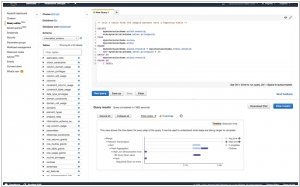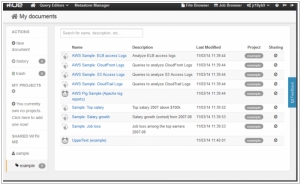Amazon EMR vs Amazon Redshift
May 27, 2023 | Author: Michael Stromann
12

Amazon Redshift is a fast, fully managed, petabyte-scale data warehouse service that makes it simple and cost-effective to efficiently analyze all your data using your existing business intelligence tools. You can start small for just $0.25 per hour with no commitments or upfront costs and scale to a petabyte or more for $1,000 per terabyte per year, less than a tenth of most other data warehousing solutions.
Amazon EMR (Elastic MapReduce) and Amazon Redshift are both data processing and analytics services offered by Amazon Web Services (AWS), but they serve different purposes and have distinct characteristics.
Amazon EMR is a fully managed big data processing service that allows you to process and analyze large datasets using popular open-source tools such as Apache Spark, Hadoop, and Presto. It is designed for running distributed processing workloads and enables you to perform tasks like data transformation, machine learning, log analysis, and real-time streaming. EMR provides flexibility and scalability, allowing you to dynamically adjust the cluster size based on workload demands.
On the other hand, Amazon Redshift is a fully managed data warehousing service. It is optimized for online analytic processing (OLAP) and is designed to handle large-scale data analytics workloads. Redshift allows you to store and query massive amounts of structured data using SQL-based queries. It offers high-performance columnar storage, parallel query execution, and automatic data compression to deliver fast query performance for complex analytical queries.
The key differences between Amazon EMR and Amazon Redshift can be summarized as follows:
1. Purpose: EMR is designed for distributed data processing and supports various open-source frameworks, while Redshift is optimized for data warehousing and performing analytical queries on large datasets.
2. Data Structure: EMR works well with both structured and unstructured data, making it suitable for diverse data processing scenarios. Redshift, on the other hand, is focused on structured data stored in a columnar format for efficient query processing.
3. Querying Capabilities: EMR supports a wide range of data processing frameworks and allows flexible querying using tools like Hive, Spark SQL, and Presto. Redshift is specifically optimized for SQL-based queries and provides advanced features like query optimization, parallel execution, and data compression.
4. Scalability: Both EMR and Redshift offer scalability, but EMR provides more flexibility in adjusting the cluster size and composition based on workload requirements. Redshift is designed for high-performance analytics and offers automatic scaling capabilities.
See also: Top 10 Big Data platforms
Amazon EMR is a fully managed big data processing service that allows you to process and analyze large datasets using popular open-source tools such as Apache Spark, Hadoop, and Presto. It is designed for running distributed processing workloads and enables you to perform tasks like data transformation, machine learning, log analysis, and real-time streaming. EMR provides flexibility and scalability, allowing you to dynamically adjust the cluster size based on workload demands.
On the other hand, Amazon Redshift is a fully managed data warehousing service. It is optimized for online analytic processing (OLAP) and is designed to handle large-scale data analytics workloads. Redshift allows you to store and query massive amounts of structured data using SQL-based queries. It offers high-performance columnar storage, parallel query execution, and automatic data compression to deliver fast query performance for complex analytical queries.
The key differences between Amazon EMR and Amazon Redshift can be summarized as follows:
1. Purpose: EMR is designed for distributed data processing and supports various open-source frameworks, while Redshift is optimized for data warehousing and performing analytical queries on large datasets.
2. Data Structure: EMR works well with both structured and unstructured data, making it suitable for diverse data processing scenarios. Redshift, on the other hand, is focused on structured data stored in a columnar format for efficient query processing.
3. Querying Capabilities: EMR supports a wide range of data processing frameworks and allows flexible querying using tools like Hive, Spark SQL, and Presto. Redshift is specifically optimized for SQL-based queries and provides advanced features like query optimization, parallel execution, and data compression.
4. Scalability: Both EMR and Redshift offer scalability, but EMR provides more flexibility in adjusting the cluster size and composition based on workload requirements. Redshift is designed for high-performance analytics and offers automatic scaling capabilities.
See also: Top 10 Big Data platforms



